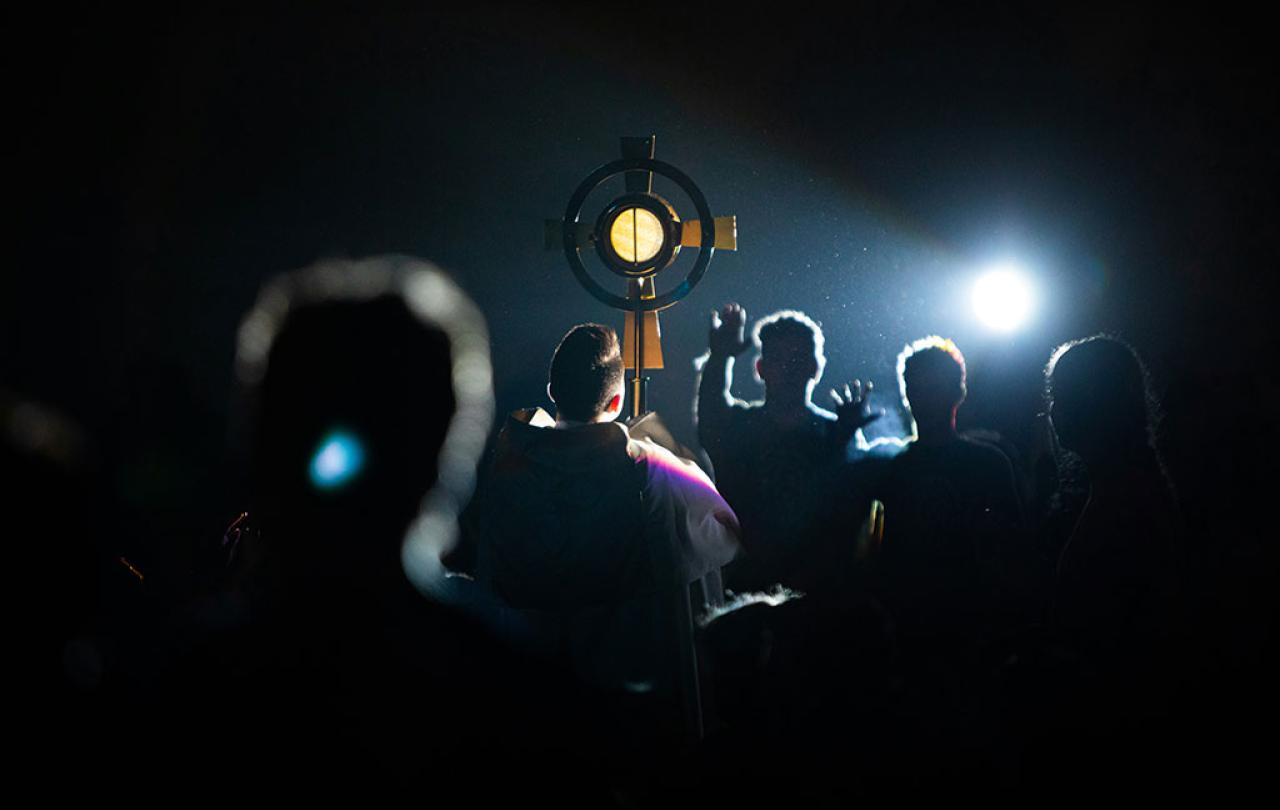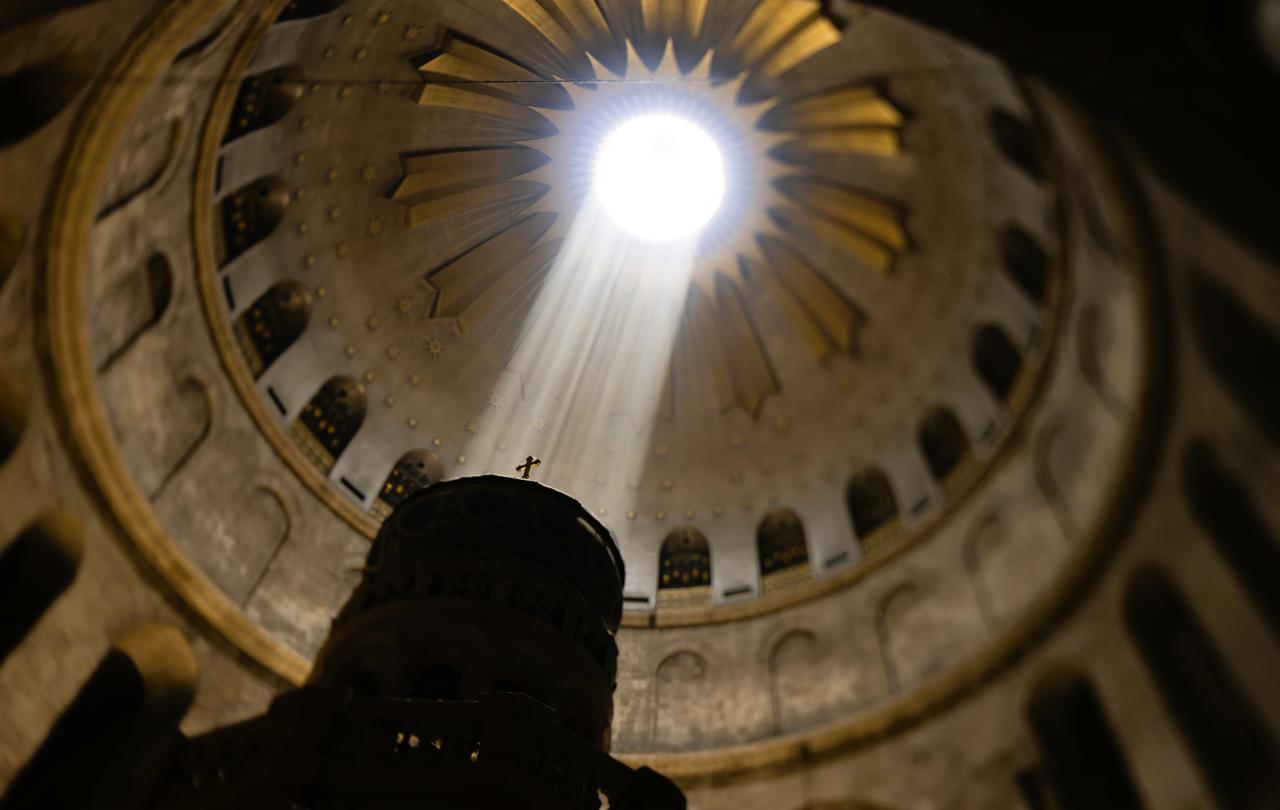
Whisper it if you will, but an increasing number of observers are wondering if we are creeping towards some kind of Christian revival. High-profile public figures such as former atheist author Ayaan Hirsi Ali, novelist Paul Kingsnorth, comedian Russell Brand and storyteller Martin Shaw have converted. Articles and podcasts from secular writers and thinkers extolling Christianity’s influence on Western culture, the societal benefits of faith, or a renewed appreciation of the sacred, are becoming a more common sight than those tub-thumping for atheism.
Among these thinkers is historian Tom Holland, who has argued that Western values, including secularism, socialism, feminism and human rights have their roots in a “Christian seedbed”. Some secular female writers are finding in the sexual revolution much to regret: Mary Harrington, author of Feminism against Progress, and writer Louise Perry, who penned The Case Against The Sexual Revolution, are opposed to casual sex and in favour of marriage.
Then there’s the Canadian academic and YouTube hit Jordan Peterson, currently on a speaking tour titled, “We who wrestle with God” and offering Bible-based life lessons to his hungry, mainly male, hearers. Even the arch-atheist Richard Dawkins said in a radio interview this Easter that he considers himself a cultural Christian and “I sort of feel at home in the Christian ethos.”
A term has been coined for someone close to Christianity but just outside it, such as Holland: “Christian-adjacent”. The broadcaster Justin Brierley has devoted a book to this apparent renewed interest, The Surprising Rebirth of Belief in God. In it he argues the New Atheism that fed off the horror of the religious extremism behind 9/11 is “a largely spent force” that has splintered into factions. (Sunday Assembly, the gathering for non-religious people, has seen its income plummet from £267,161 in 2016 to just £28,120 in 2022. Its leaders were approached for comment.)
What does all this amount to? Are we moving beyond the secular scepticism of religion? Does anyone want to return to the judgemental, Anglo-centric Christianity of a previous age?
I wish to be somebody who goes, ‘But look, come with me, see this, see that. Does that speak to you?’ The whole of my writing is to help people get away from preconceptions.”
The author and psychiatrist Iain McGilchrist says of a possible religious revival: “I feel that there is [one], and I feel that there will be. And I think it's important.” Already, he says, “It's much easier to talk about religion and one's religious beliefs … than it would have been 20 years ago [and] a lot of people say that.” Some young people who are not from a religious background have surprised him by finding their way to religion.
People he knows who have turned to Christianity in mid-life have moved “to the Catholic Church, but most of them to the Orthodox Church, because they see … genuine valid, uninterrupted tradition of the divine and the sacred, of worship of it, of the sense of wonder, the sense of relative humility, not triumphant exaltation, and the sense of a shared oneness that is encaptured in these ancient rituals.”
McGilchrist believes the route of fulfilment “is oneness with nature, with the Divine and with one another,” and that rediscovering a connection to the Sacred (he refers to the Sacred or Divine rather than religion) would address other pressing issues such as the “poisoning of the oceans”, due to “a proper understanding of our position in the cosmos, not as the exploiter, but as the caretaker.”
Of his own views, he says: “I genuinely am not sure how to understand what it means to be a Christian really, but I suspect that I am one.” He stresses that he doesn’t want anyone to be put off by their preconceptions of what that might mean. “I wish to be somebody who goes, ‘But look, come with me, see this, see that. Does that speak to you?’ The whole of my writing is to help people get away from preconceptions.”
“There is an intellectual revival, if you like, because the complacent secularism, which culminated in people like Richard Dawkins, is obviously broke.”
Mark Vernon, a psychotherapist, author and former Church of England priest, also perceives a shift in the conversation around religion, and a new sense of enquiry that did not exist 20 years ago. He believes “a mystical Christianity” would be needed to reach the many people who describe themselves as “spiritual but not religious”.
Author of Spiritual Intelligence in Seven Steps, Vernon enjoys the silence of a Buddhist meeting or being out in nature on pilgrimage to holy places, “feeling different energies, different pulses, different rhythms … Being in a place where you just feel there's a different thing going on here, that can be healing. I think a lot of mental health is due to just people being trapped in very narrow worldviews.”
Dr Vernon, whose faith journey has included atheism, follows what he calls a “commodious” Christianity – “my perspective on the universal story, which I think is ultimately beyond any one expression of it – and focuses on the “Christ [that] lives within me”, in contrast to “more socially driven” or “conversion-driven” Western Christianity.
For Abby Day, Professor of Race, Faith and Culture at Goldsmiths, University of London, any talk of religious revival is “wishful thinking” but like Vernon she believes that if anything were to speak to the “spiritual but not religious” it would be “within them, or maybe within nature” and “non-institutional”.
Professor Day is wary of the interest in Christianity from the populist right, as seen in the European elections and US Evangelicals’ support of Trump. They “claim Christianity, but what they're claiming is a national identity, and so we're seeing Christianity be weaponised” to deliver a conservative agenda, she says.
Day, author of Why Baby Boomers Turned from Religion, takes issue with some of Holland’s arguments, saying: “The Churches have not shown themselves to be exemplary models of equality or human rights.”
Veteran religious affairs journalist Andrew Brown, co-author of That Was The Church That Was: How the Church of England lost the English people, is less hostile. He says: “There is an intellectual revival, if you like, because the complacent secularism, which culminated in people like Richard Dawkins, is obviously broke.” But he adds: “Most of the stuff that's interesting and new is coming from people who are either Christians or Christian-adjacent.” But, he adds, “It takes a long time for the ideas of the intelligentsia to filter down … “If there is to be anything like [a revival], it has to start locally, and far below the radar of news.” So, for example, what impact has 14 years of austerity had that have led to millions of people attending food banks and warm spaces in churches? (According to 2023 data from Savanta and the National Churches Trust 5 per cent of UK adults visited a church last year to access a food bank (equivalent to around 3.4 million people) and 4 per cent (2.7 million) for a warm space.) “That has to be doing something, but I don’t know what,” he laughs, adding: “There really isn’t enough decent religion reporting because journalism is in crisis.”
That puts established religion in good company. But the Churches the Boomers rejected may have become humbler during their exile, and alternatives are available that offer different emphases. Vernon notes that the Orthodoxy that has attracted Kingsnorth and Shaw – Vernon’s “favourite convert of this revival” – is comfortable with other faiths and is more about participation through liturgy than converting to safeguard your immortal soul. And one attraction of the silence Vernon enjoys is that it doesn’t give glib answers, including to the profound questions around meaning, purpose and identity that beset nation, Church and individuals alike.
Putin’s violent ambitions could yet drive people to prayer. For now, at least, the more thinkers publicly take Christianity seriously and rediscover its wonder and mystery, the fairer hearing its stories, values, social benefits and cultural legacy will receive in the rowdy market-place of ideas, offering – at the very least – the cradle agnostic a more informed choice.





